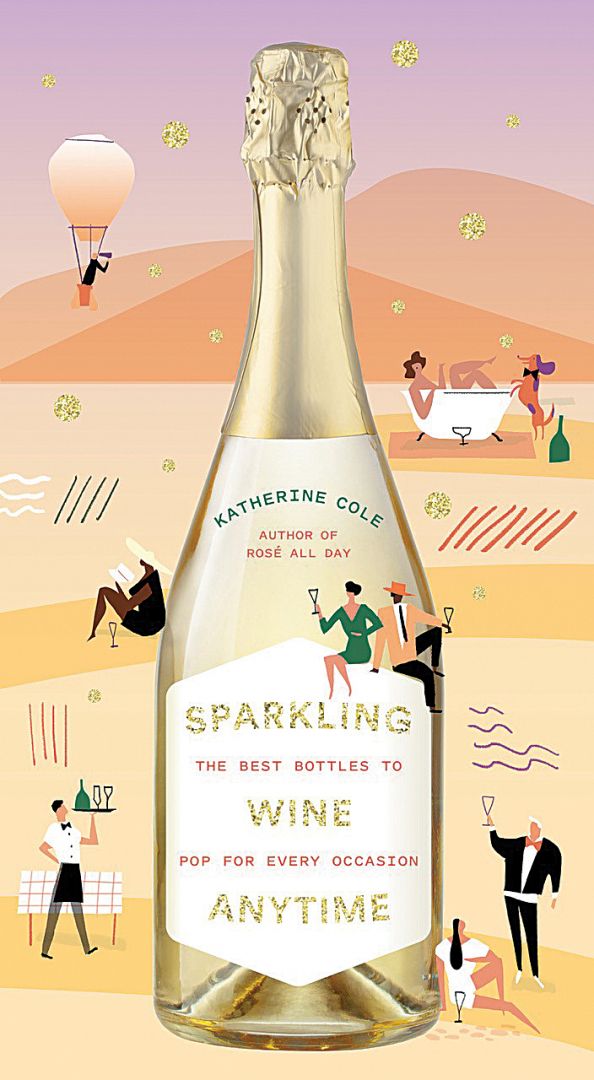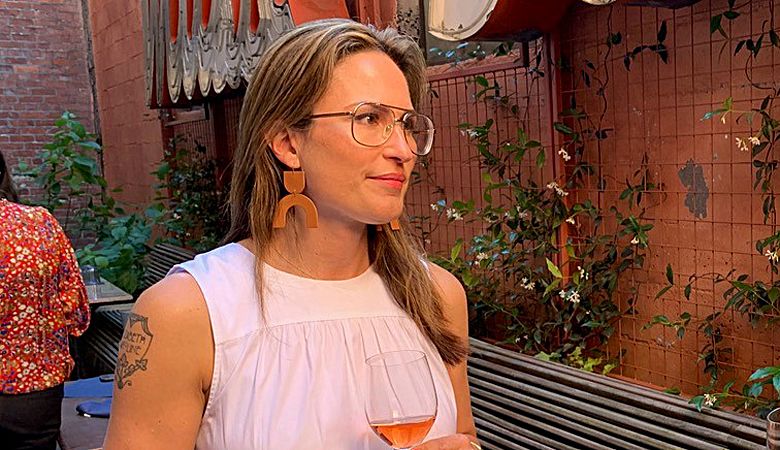On the Bubbles
New book sparkles with personality
At first blush — a nod to her previous book about rosé — Katherine Cole’s latest title, “Sparkling Wine Anytime” (Abrams Press), seems crammed with too much material. But, a second look, shows it to be logically organized with easy-to-access information. It’s a dip-in, dip-out book with a witty, informal style and catchy graphics.
A Portland-based wine journalist, Cole’s been writing about wine for more than 20 years and has published five books over the last 10 years.
“I pitched a book about Prosecco to my publisher because I felt it was underrated and misunderstood,” Cole explains. “But then the project shifted to rosé. At the time, there weren’t any books about it, and it was trendy, a pop-culture hit.” So, she shifted her focus. “By the time ‘Rosé All Day’ came out in 2017, there were three other books out about the same subject.”
Still, it’s been her bestselling book to date, a fact she credits to the design-oriented publisher. “I think the design contributed to its crossover appeal from wine geeks to home decorators. Stores like Anthropology have marketed it as a coffee table book.”
In researching the subject, she realized sparkling and rosé wines both suffer from the same malady: Consumers tend to have narrow, set narratives about both. She felt there was an immense depth to the subject of sparkling, and she couldn’t find the book she was interested in reading. “So, I decided to write one,” she says.

The first few chapters focus on the three basic methods of making sparkling wine and its history, with entertaining, quirky sidebars and fun illustrations, such as The Art of Sabrage, page 57, where you slice off the top of a Champagne bottle with a sword. From there, the book explores specific regions with recommended selections, tasting notes, price range and other details.
Naturally, she begins with Champagne, the famous region in France, where Cole says small grower-producers are increasing. “The interest in making terroir-driven, single-vineyard Champagnes continues to grow,” she says.
In researching the book, Cole toured Champagne, as well as the Penedès region in Catalonia, Spain, and Trentino in Northern Italy. She says producers continue looking to Champagne, where the beverage remains quintessential to its identity. Exploring the area’s caves that date as far back as Roman times, was a once-in-a-lifetime experience, Cole notes. The ancient caves not only served as storage areas for wine but also protected people during both World War I and II. During her trip, she visited three or four wineries a day, remarking on the high level of access she and her assistant were granted.
As a reader, I wondered if she’d personally tasted all the featured wines — the book has seven chapters on wine regions with 24 highlighted wines per chapter.
“Yes, in fact there’s a funny story about that,” Cole explains. “In the book’s acknowledgments, I thank my dentist. Because of all the high-acid wines I was tasting, the enamel on my front teeth suffered, and I ended up with veneers.”
In the next breath, she reconsiders: “No, that’s not right. I didn’t taste all of them. I did something new in this book. I brought in experts to suggest two or three wines from a region.” For instance, she asked Jordan Michelman, a coffee journalist and collector of natural wine, to recommend Oregon pét-nats. He says he chose three because “the kids like them.”
Cole explains her use of experts: “I wanted to round out areas that I didn’t know as well and represent different palates.”
When it came to her own wine selections, did she choose based on awards or media attention? Cole says her process was more inclusive and region-specific. “I wanted to include a wide range of prices and wines that were known and available to people where they lived.” What’s easily available and well-known here differs wildly in other locales.
Cole says she’s fortunate to live in Portland, where the world’s Champagne expert, Peter Liem, resides. In fact, the city’s wine community has an amazing history of discovering grower Champagnes. (For more on Portland’s sparkling wine scene, see her article in Seven Fifty, an online marketplace for the beverage alcohol trade.)
Owing to Portland’s sparkling resources, she easily sourced wines through area retailers and importers. She recalls, “Willamette Wine Storage members pulled many of their own bottles for sampling.”
Cole is heartily optimistic about Oregon, predicting the Willamette Valley “will soon emerge as an American epicenter for sparkling winemaking.” But why is that? “Who makes better Pinot Noir, Chardonnay and Pinot Meunier, the main grapes for Champagne? Plus, Oregon wineries have such a great connection with France.”
Maisons & Domaines Henriot, producer of its namesake Champagne, owns a controlling stake in Beaux Frères in the Ribbon Ridge AVA near Newberg. The Bollinger family, makers of Champagne Bollinger, recently purchased Ponzi Vineyards in the Chehalem Mountains. Cole predicts, “They’re not making sparkling now, but they will.”
Currently, Cole is taking a break from book writing. She explains, “I plan to focus on my day job at Vin Agency as well as my podcast, ‘The Four Top.’” Her new season in September will explore wine world issues, such as diversity, science, finance, sustainability and more.











